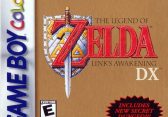Azure Striker Gunvolt
3DS
Inti Creates
Inti Creates
2D Sidescroller
Action
Teen
August 20, 2014 (JP)
August 29, 2014 (NA)
April 2, 2015 (EU)
A digital copy of this game was provided by the publisher for review purposes.
At this point in time, the Mega Man series is essentially dead. The last Capcom-developed game was released over four years ago, and since then, the (former?) mascot has only been seen as the subject of merchandise and cameos in other games (Need I say more?). While the Blue Bomber has… well, bombed, his fanbase certainly hasn’t, and that’s precisely why a game like Azure Striker Gunvolt – developed by Mega Man Zero and Mega Man 9 / 10 creators Inti Creates – is important to many.
The game stars Gunvolt, a member of the resistance team QUILL that is locked in a struggle against the Sumeragi Group. Sumeragi has essentially established a form of world peace through order, but at a price: wielders of psychic “Septima” abilities – known as Adepts – are sent to “protection camps” where dangerous tests are performed on them to harness their powers. This is where QUILL comes in, as the group looks to stop Sumeragi and their treatment of Adepts. Gunvolt is sent on a mission by QUILL to stop Sumeragi’s “Muse,” a computer program whose sounds control the adepts. After learning that the Siren is actually part of a young girl being held against her will, Gunvolt frees the girl – named Joule – and breaks away from QUILL in order to better protect her. Several months later, Gunvolt is drawn back in to QUILL’s conflict with Sumeragi, and becomes determined to put a stop to them for good.

Some of Gunvolt‘s dialogue is subject to the same tropes as other Japanese media.
Despite the story’s premise not being all that bad, and the effort put forth by the game’s translators definitely showing, I compare it in many ways to the way the plot was presented in Final Fantasy XIII: the game throws many different terms and abbreviations at you without giving much of an explanation as to what they actually mean, leading to confusion. Unlike Final Fantasy XIII, however, the game doesn’t include supplementary material to help alleviate the confusion, meaning the only way to figure out what many terms mean is to do some educated guessing. As for the actual plot, it is still subject to the same tropes as many recent Japanese anime-inspired games, with young, innocent, and scantily clad females and an enigmatic character sent by “God” to stop both sides of the conflict. Thankfully, the game’s dialogue often helps save the story a bit, with some entertaining humor and witty banter between characters.

Gunvolt‘s combat revolves around tagging enemies, and following up with a jolt of electricity.
While the game’s story may not be the best, its gameplay is definitely better. If you’ve played any of Inti Creates’ Mega Man Zero or Mega Man ZX games, then you’ll feel right at home: similarly to those games, Gunvolt focuses on fast 2D action with some platforming mixed in. As you run, jump, and dash through the game’s many levels, you will eliminate enemies with a combination of one of Gunvolt’s guns and his “flashfield,” an electric barrier that can be activated with the tap of a button. The main method of defeating an opponent is by shooting them multiple times with a gun to create a better lock-on, and then activating the flashfield to shock them to death. The flashfield is based on a depleting “EP” meter, however, and must constantly be given attention to make sure that not all of the meter is used at once.

Gunvolt can gain access to skills that make combat easier, such as the sword Luxcalibur.
The concept of shooting-then-electrocuting is fun enough at first, but after playing the game for a few hours, it starts to become slightly repetitive. While you can unlock several types of guns over the course of the game – one gun features an automatic turret, while another lets you take control of the bullets’ direction – it never really changes the way you approach combat with enemies, meaning that all it ever comes down to is shooting to create a lock, and activating the flashfield to finish the job. In addition, the game doesn’t feature very many enemy types, and the enemy AI doesn’t react to what you’re doing– enemies follow a set pattern, and they follow that pattern through to their death. Oftentimes, the only things that change up combat are usable skills, which can range from replenished health to a large electric sword that cuts through enemies in its path, though these skills are often overpowered. Thankfully, the bosses have some unique weak spots that are fairly creative, but then there’s also the problem of them requiring a great deal of trial-and-error, as if you reach a certain point in battles without following the correct procedure, you may have to restart the battle to win. For example, one boss fight requires you to lock on to two separate targets at the same time and shock them both; if you defeat one target before the other, it will regenerate with a small amount of health, and getting them both to fall after that is extremely difficult. While the combat is certainly not bad, it’s one thing that a potential sequel could greatly improve on to be more engaging and less frustrating.

Gunvolt offers many different challenges that can make additional playthroughs more interesting.
A redeeming aspect of the gameplay is the inclusion of optional challenges that help to add replay value to the game. The missions can be tackled three at a time, and offer several different types of objectives. Many of these focus on time attack-related stunts, such as clearing a mission in a certain timeframe or completing it with a high rank. However, there are some more creative objectives that make the game more challenging, such as defeating a boss without using any skills, or clearing a stage without taking any damage. Together, these challenges can make for very interesting speedrun-type playthroughs– good luck trying to clear a stage in under seven minutes without taking any damage while also getting a B rank or above.
One of the best features of Gunvolt is its visuals. The game marks a return to the colorful, pixelated worlds of older games (Including, of course, Mega Man), while still offering detailed looks at forests, underwater facilities, skyscrapers, and train tunnel systems. This carries over to the game’s characters, who are individually recognizable thanks to their admittedly sleek and cool designs. While several of them are a little too similar to characters seen in the Mega Man Zero and ZX games, they still have enough differences that they won’t be easily confused with, say, Harpuia and Ciel.
Complementing the visuals is a very energetic soundtrack by Ippo Yamada, the man behind the music in – you guessed it – Mega Man Zero and Mega Man ZX. The game’s music feels like it would have been right at home in a Mega Man game, with fast-paced beats and synth medleys. Thankfully, this also matches Gunvolt‘s gameplay, and makes playthroughs all the more enjoyable; while playing through the Eridu mission, I was constantly tapping my foot along with its background music. Fans of electronic and techno music will likely find the soundtrack enjoyable to listen to even outside of the game.
The sum of Gunvolt‘s various aspects is a fun game that is not only challenging, but also great to see and hear. Its gameplay may not be as good as it could have been due to repetition and sometimes frustrating boss battles, but it does a good job at bringing back a style of gameplay that hasn’t been seen in games since the end of Capcom’s Mega Man days, particularly in the Zero and ZX sub-series. Hopefully, should a sequel ever come about, Inti Creates focuses on improving the gameplay to be more engaging, and the story to be easier to follow and less shackled by generic genre tropes. All in all though, Gunvolt is a game I would recommend not only to Mega Man fans, but anyone looking for an enjoyable action platformer on their 3DS.
Visuals are reminiscent of the Mega Man Zero games, in a good way.
Colorful environments and detailed character sprites.
Electrifying soundtrack matches the fast-paced gameplay while also being a fun listen on its own.
Encourages replayability with various side-missions.
Somewhat confusing and generic story somewhat saved by the dialogue.
Boss battles can sometimes be frustrating and require a trial-and-error approach.
Gameplay in general can be slightly repetitive since all battles require the same basic tactics.


























